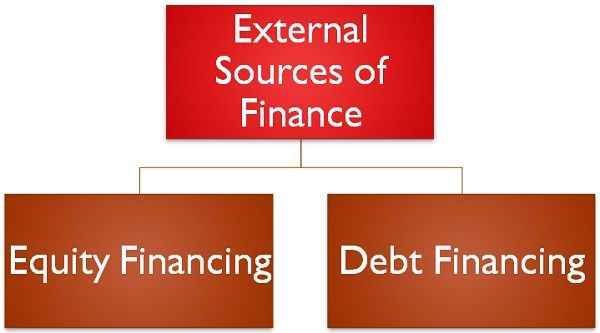 Business implies a commercial activity of producing and distributing goods and services to final consumers for a profit. To undertake various business activities, an entity requires money and thus, finance is said to be the spine of business, that keeps it going. The capital brought in, to the business by the proprietor is not sufficient to fulfill the financial needs and so he/she looks for new ways to fulfill fixed capital and working capital needs. Based on the source of generation, it is classified as internal and external sources, wherein former covers those means which are generated within the business.
Business implies a commercial activity of producing and distributing goods and services to final consumers for a profit. To undertake various business activities, an entity requires money and thus, finance is said to be the spine of business, that keeps it going. The capital brought in, to the business by the proprietor is not sufficient to fulfill the financial needs and so he/she looks for new ways to fulfill fixed capital and working capital needs. Based on the source of generation, it is classified as internal and external sources, wherein former covers those means which are generated within the business.
Conversely, the latter implies the sources of funds that are outside the business like finance provided by investors, lending institutions etc.
A firm can raise funds from different sources, wherein each source has distinct features. One should understand the basic features of the sources of finance so as to identify the best available source to meet out financial requirements. Here, in the given article we are going to talk about the differences between internal and external sources of finance.
Content: Internal Sources of Finance Vs External Sources of Finance
Comparison Chart
| Basis for Comparison | Internal Sources of Finance | External Sources of Finance |
|---|---|---|
| Meaning | Internal sources of finance alludes to the sources of business finance that are generated within the business, from the existing assets or activities. | External sources of finance implies the arrangement of capital or funds from sources outside the business. |
| Includes | Sale of Stock, Sale of Fixed Assets, Retained Earnings and Debt Collection | Financial Institutions, Loan from banks, Preference Shares, Debenture, Public Deposits, Lease financing, Commercial paper, Trade Credit, Factoring. |
| Cost | Low | High |
| Collateral | Not required | Sometimes required. |
| Amount raised | Comparatively less | Huge |
Definition of Internal Sources of Finance
In business, internal sources of finance delineate the funds raised from existing assets and day to day operations of the concern. It aims at increasing the cash generated from regular business activities. For this purpose, evaluation and control of costs are made, along with reviewing the budget. Moreover, the credit terms with customers are verified, so as to effectively manage the collection of receivables.
Internal sources of finance include selling of surplus inventories, ploughing back of profit, accelerating collection of receivables, and so on.
Definition of External Sources of Finance
External sources of finance refer to the cash flows generated from outside sources of the organization, whether from private means or from the financial market. In external financing, the funds are arranged from the sources outside the business. There are two types of external sources of finance, i.e. long term source of finance and short term sources of finance. Further on the basis of nature, they can be classified as:
- Debt financing: The source of finance wherein fixed payment has to be made to the lenders is debt financing. It includes:
- Bank loans
- Corporate Bonds
- Leasing
- Commercial Paper
- Trade Credit
- Debentures
- Equity Financing: Equity is the major source of finance for most of the companies which indicate the share in the ownership of the firm and the interest of the shareholders. The firms raise capital by selling its shares to the investors. It includes:
- Ordinary shares
- Preference shares
Key Differences Between Internal and External Sources of Finance
The points given below explain the difference between internal and external sources of finance:
- When the cash flows are generated from sources inside the organization, it is known as internal sources of finance. On the other hand, when the funds are raised from the sources external to the organization, whether from private sources or from the financial market, it is known as external sources of finance.
- Internal sources of finance include Sale of Stock, Sale of Fixed Assets, Retained Earnings and Debt Collection. In contrast, external sources of finance include Financial Institutions, Loan from banks, Preference Shares, Debenture, Public Deposits, Lease financing, Commercial paper, Trade Credit, Factoring, etc.
- While internal sources of finance are economical, external sources of finance are expensive.
- Internal sources of finance do not require collateral, for raising funds. Conversely, assets are sometimes mortgaged as security, so as to raise funds from external sources.
- Amount raised from internal sources is less and they can be put to a limited number of uses. On the contrary, large amounts can be raised from external sources, which have various uses.
Conclusion
There are a number of factors which influence the owner’s decision which determines the source of fund to be chosen. Such factors include a time period for which funds are required, the purpose of raising finance, and the total funds required by the firm.







prince roni says
The article was very helpful
Linh Phan says
Thank you very much for this article. It helped me a lot with my presentation in the university.
Paul Friday says
I thanks the author of this write-up
I believed this article will help my seminar.
kaniz fatema says
Thank you very much , It is helpful.
Sulaiman Ishiyaku says
Thank you too
Mercy Joseph says
I really appreciate the author of this write up it’s helpful
Medius says
Your blog post is very interesting. Wish to see more like this. Thanks for sharing such great information.
cathy says
Thank you for the information; it is much better explained than on most websites. I appreciate you sharing.